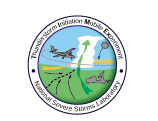
 Ziegler-1
Ziegler-1
Hypothesis (Ziegler-1) concerning convective initiation along mesoscale boundaries |
|
|
Conrad Ziegler on August 27, 1997 at 22:17:36: Environments supporting deep convective initiation are characterized by the joint occurrence of locally strong convergence and high relative humidities extending through the depth of the Convective Boundary Layer (CBL). Specifically, convective initiation requires two factors, namely; (i) mesoscale (Lx = 1-10 km across boundary, Ly = 10-100 km along boundary) lift providing sufficient kinetic energy to overcome local CIN; (ii) minimized loss of CAPE (with attendant increase of LCL, LFC, and CIN) due to mixing of the parcel with warm, dry ambient air. The latter implies the existence of moisture plumes and/or layers prior to and in the region of the first deep convection. |
|
| Estimate the horizontal distribution of near-surface parcel CAPE, LCL, LFC, and CIN using M-CLASS soundings, low level aircraft traverses, and fixed mesonet and NWS surface observations. Use M-CLASS soundings and aircraft traverses to estimate profiles of stability parameters. Use aircraft stepped traverses and Doppler radar clear air measurements to estimate airflow, air parcel trajectories, and especially vertical circulations in the CBL. Use GOES-8, WSR-88D network, and P-3 surveillance radar data and video-recorded cloud observations to identify significant deep convection. Stratify cases with or without deep convection according to: (i) ratio of mesoscale updraft kinetic energy to CIN; (ii) lapse rates of stability parameters and length and extent of mixing along parcel trajectories. | |
| Based on a sufficient sample of cases (both with without convection), the hypothesis is refuted if deep convection: (i) occurs with weak convergence and/or strong stability parameters lapse rates; (ii) does not occur despite strong convergence and negligable stability parameters lapse rates. | |
|
The following appear in order; discussion points may directly refer to one or more comments preceeding it. Steve Koch on October 22, 1997 at 16:49:39:
Click here to comment on this hypothesis. Please reference: ZIEGLER-1. |
|